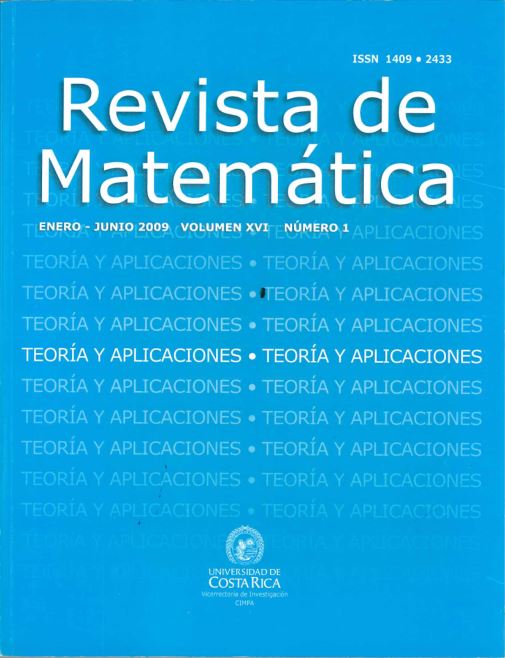Abstract
Latent growth curve models as structural equation models are extensively discussed in various research fields (Duncan et al., 2006). Recent methodological and statistical extension are focused on the consideration of unobserved heterogeneity in empirical data. Muth´en extended the classical structural equation approach by mixture components, i. e. categorical latent classes (Muth´en 2002, 2004, 2007).
The paper will discuss applications of growth mixture models with data from one of the first panel studies in Germany which explore deviant and delinquent behavior of adolescents (Reinecke, 2006a, 2006b). Observed as well as unobserved heterogeneity will be considered with growth mixture models using the program Mplus (Muth´en & Muth´en, 2006). Special attention is given to the distribution of the substantive
dependent variables as a count measures (Poisson distribution, zero-inflated Poisson distribution, cf. Nagin, 1999). Different model specifications with respect to substantive questions will also be emphasized.
References
Akaike, H. (1987) “Factor analysis and the AIC”, Psychometrika 52: 317–332.
Bentler, P.M. (2001) EQS 6: Structural Equations Program Manual. Multivariate Software, Encino.
Bauer, D.; Curran, P. (2003) “Distributional assumptions of growth mixture models: Implication for overextraction of latent trajectory classes”, Psychological Methods 8: 338–363.
Dempster, A.P.; Laird, N.M.; Rubin, D.B. (1977) “Maximum likelihood from incomplete data via the EM algorithm”, Journal of the Royal Statistical Society, Series B 39: 1–38.
Duncan, T.E.; Duncan, S.C.; Strycker, L.A.; Li, F.; Alpert, A. (2006) An introduction to latent variable growth curve modeling: Concepts, issues, and applications. Lawrence Erlbaum, Mahwah.
Hussong, A.; Curran, P.; Moffit, T.; Caspi, A.; Carrig, M. (2004) “Substance abuse hinders desistance in young adults’ antisocial behavior”, Development and Psychopathology 16: 1029–1046.
Jöreskog, K.G.; Sörbom, D. (2004) LISREL 8.7 for Windows. Scientific Software International, Inc., Lincolnwood.
Kreuter, F.; Muthén, B. (2008) “Analyzing criminal trajectory profiles: Bridging multilevel and group-based approaches using growth mixture modeling”, Journal of Quantitative Criminology 24: 1–31.
Lambert, D. (1992) “Zero-inflated Poisson regression with an application to defects in manufacturing”, Technometrics 34: 1–13.
Land, K.C.; McCall, P.L.; Nagin, D.S. (1996) “A comparison of Poisson, negative binomial, and semiparametric mixed Poisson regression models with empirical applications to criminal careers data”, Sociological Methods & Research 24: 387–442.
Lo, Y.; Mendell, N.R.; Rubin, D.B. (2001) “Testing the number of components in a normal mixture”, Biometrika 88: 767–778.
McArdle, J.J. (1988) “Dynamic but structural equation modeling of repeated measures data”, In: J.R. Nesselroade & R.B. Cattell (Eds.) Handbook of multivariate experimental psychology Plenum, New York: 561–614
McArdle, J.J.; Epstein, D. (1987) “Latent growth curves within developmental structural equation models”, Child Development 58: 110–133.
McLachlan, G.J.; Peel, D. (2000) Finite mixture models. Wiley, New York.
Meredith, M.; Tisak, J. (1990) “Latent curve analysis”, Psychometrika 55: 107–122.
Muthén, B. (1991) “Analysis of longitudinal data using latent variable models with varying parameters”, In: L. Collins & J. Horn (Eds.) Best Methods for the Analysis of Change (pp. 1–17). Washington, DC: American Psychological Association.
Muthén, B. (1997) “Latent variable modeling with longitudinal and multilevel data”, In: A. Raftery (Ed.) Sociological Methodology, Blackwell Publishers, Boston: 453–480.
Muthén, B. (2001a) “Latent variable mixture modeling”, In: G.A. Marcoulides & R.E. Schumacker (Eds.) New Developments and Techniques in Structural Equation Modeling. Lawrence Erlbaum, Mahwah: 1–33.
Muthén, B. (2001b) “Second-generation structural equation modeling with a combination of categorical and continuous latent variables: New opportunities for latent class/latent growth modeling”. In: L.M. Collins & A. Sayer (Eds.) New Methods for the Analysis of Change, American Psycological Association, Washington DC:
–322.
Muthén, B. (2002) “Beyond SEM: General latent variable modeling”, Behaviormetrika 29: 81–117.
Muthén, B. (2003) “Statistical and substantive checking in growth mixture modeling: Comment on Bauer and Curran (2003)”, Psychological Methods 8: 369–377.
Muthén, B. (2004) “Latent variable analysis: Growth mixture modeling and related techniques for longitudinal data”. In: D. Kaplan (Ed.) The Sage Handbook of Quantitative Methodology for the Social Sciences. Sage, Thousand Oaks: 345–368.
Muthén, B. (2007) “Latent variable hybrids: Overview of old and new models”. In: G. R. Hancock & K. M. Samuelson (Eds.) Advances in Latent Variable Mixture Models, Information Age Publishing, Charlotte: 1–24.
Muthén, B.; Curran, P.J. (1997) “General longitudinal modeling of individual differences in experimental designs: A latent variable framework for analysis and power estimation”, Psychological Methods 2: 371–402.
Muthén, L.; Muthén, B. (2001) Mplus: The comprehensive modeling program for applied researchers: User’s guide (2nd ed.). Muthén & Muthén, Los Angeles.
Muthén, L.; Muthén, B. (2006) Mplus user’s guide (4th ed.). Muthén & Muthén, Los Angeles.
Muthén, B.; Shedden, K. (1999) “Finite mixture modeling with mixture outcomes using the EM algorithm”, Biometrics 55: 463–469.
Nagin, D.S.; Land, K.C. (1993) “Age, criminal careers, and population heterogeneity: Specification and estimation of a nonparametric, mixed Poisson model”, Criminology 31: 327–362.
Nagin, D.S. (1999) “Analyzing developmental trajectories: A semi-parametric, group-based approach”, Psychological Methods 4: 139–157.
Rao, C. R. (1958) “Some statistical methods for comparison of growth curves”, Biometrics, 14 : 1–17.
Reinecke, J. (2006a) “Longitudinal analysis of adolescents’ deviant and delinquent behavior: Applications of latent class growth curves and growth mixture models”, Methodology 2: 100–112.
Reinecke, J. (2006b) “The development of deviant and delinquent behavior of adolescents:Applications of latent Class growth curves and growth mixture models”. In: K. van Montford, H. Oud & A. Satorra (Eds.) Longitudinal models in the behavioral and related sciences, Lawrence Erlbaum, Mahwah: 239–266.
Roeder, K.; Lynch, K.G.; Nagin, D.S. (1999) “Modeling uncertainty in latent class membership: A case study in criminology”, Journal of the American Statistical Association 94: 766–776.
Ross, S.M. (1993) Introduction to Probability Models (5th ed.). Academic Press, New York.
Schwartz, G. (1978) “Estimating the dimensions of a model”, Annals of Statistics 6: 461–464.
Tucker, L.R. (1958) “Determination of parameters of a functional relation by factor analysis”, Psychometrika 23: 19–23.
Yang, C.C. (1998) Finite Mixture Model Selection with Psychometric Applications. Unpublished doctoral dissertation, University of Groningen.
